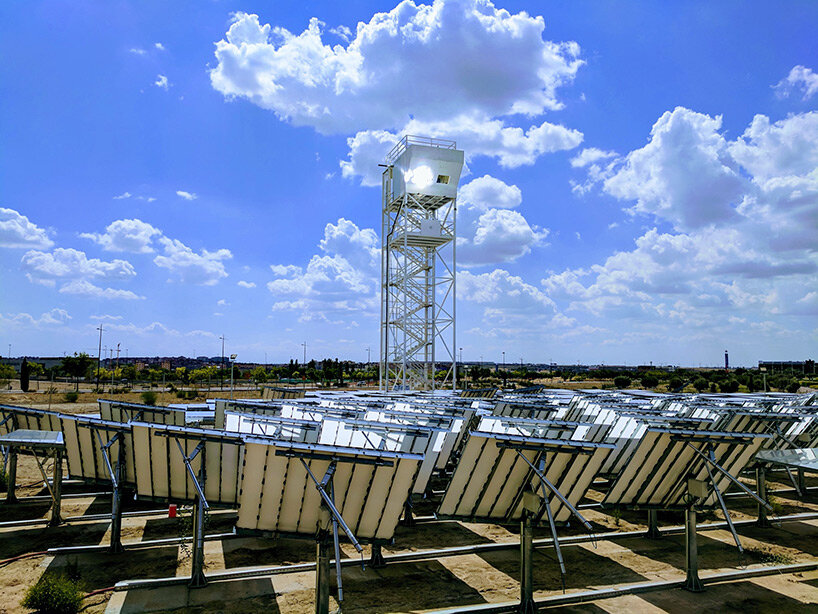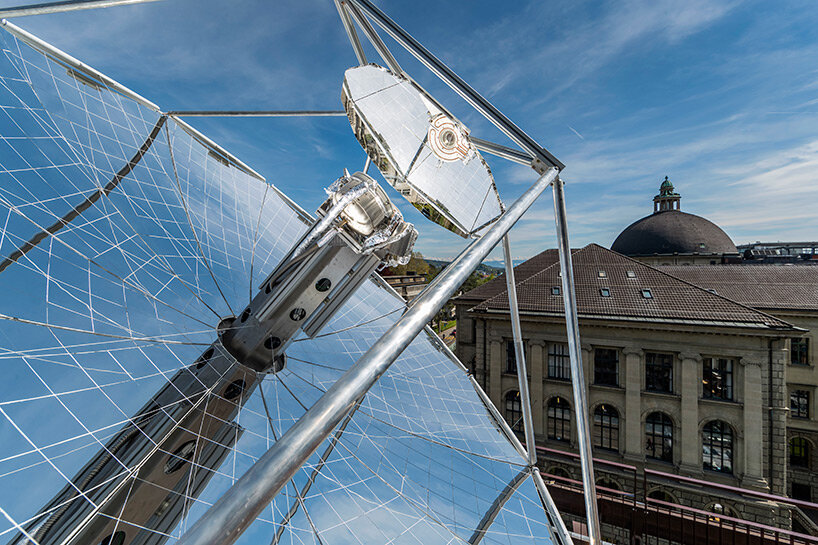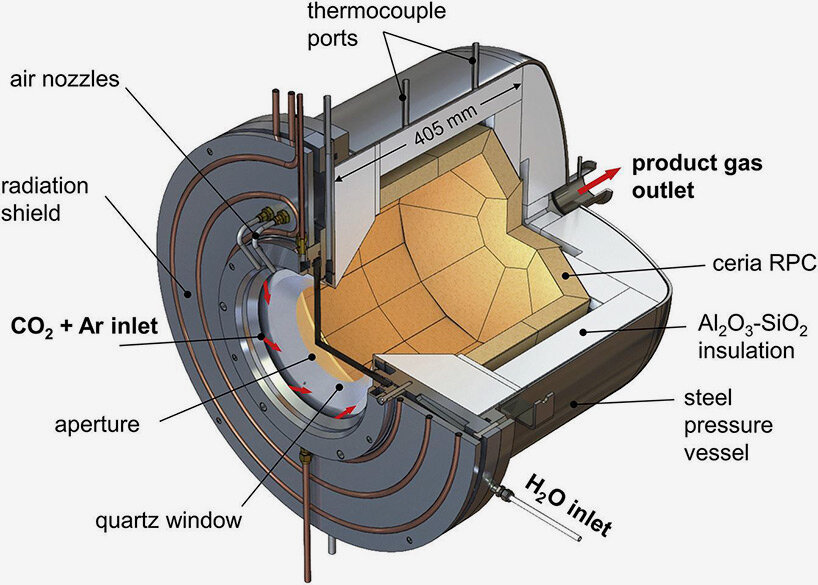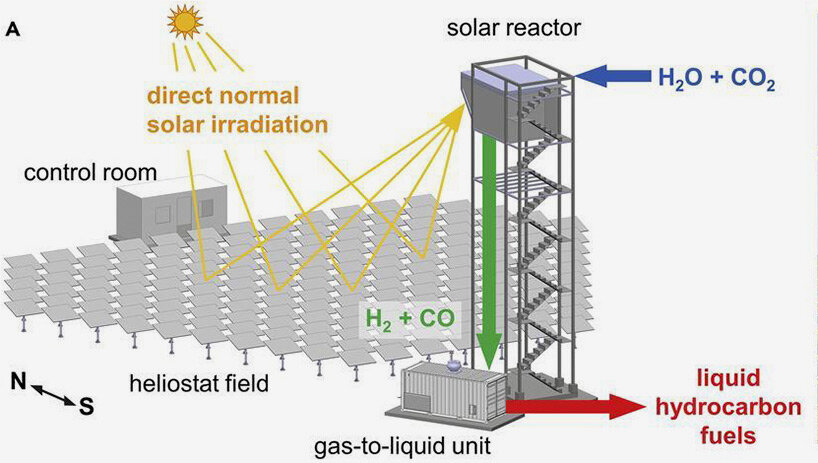ETH zurich researchers design solar tower that produces jet fuel from water and light
fuels from sunlight and air
International researchers at ETH Zurich have found a way to produce aviation fuel using water, carbon dioxide (CO2), and sunlight. The team has designed an all-in-one tower that uses solar energy to produce a synthetic alternative to fossil-derived fuels like kerosene and diesel. According to the creators, the fuel that is produced is carbon-neutral, sustainable, and fully compatible with the existing aviation infrastructure for delivery, storage, and usage in jet engines. Although the device can only convert about 4% of solar energy into gasoline at the moment, the team claims they are trying to increase this efficiency to over 15%.

all images courtesy of ETH Zurich
one step closer to aviation carbon neutrality
The aviation sector is responsible for about 5% of global anthropogenic emissions causing climate change. It relies heavily on kerosene, also known as jet fuel, a liquid hydrocarbon fuel primarily made from crude oil. On a worldwide scale, there isn’t currently a clean option for long-haul commercial aircraft. With their innovative tower, the research team wants to change this and move the aviation sector one step closer to becoming carbon neutral.
The design team has implemented their newly unveiled system in a solar tower set in Spain. ‘We are the first to demonstrate the entire thermochemical process chain from water and CO2 to kerosene in a fully-integrated solar tower system,’ says Aldo Steinfeld, a professor from ETH Zurich (see more here). Previous attempts to produce aviation fuels through the use of solar energy have mostly been performed in the laboratory.
‘With our solar technology, we have shown that we can produce synthetic kerosene from water and CO2 instead of deriving it from fossil fuels. The amount of CO2 emitted during kerosene combustion in a jet engine equals that consumed during its production in the solar plant,’ Steinfeld says. ‘That makes the fuel carbon neutral, especially if we use CO2 captured directly from the air as an ingredient, hopefully in the not-too-distant future.’

The team began scalability testing in 2017 and constructed a solar fuel production facility at the IMDEA Energy Institute in Spain. The fuel plant consists of 169 sun-tracking reflective panels that redirect and concentrate solar radiation into a solar reactor mounted on top of a tower. The solar reactor, which has a porous structure constructed of ceria, is then powered by the concentrated solar radiation to drive oxidation-reduction (redox) reaction cycles. The ceria transforms water and CO2 put into the reactor into syngas, a specially formulated blend of hydrogen and carbon monoxide. The ceria is not burned and can be used repeatedly. Syngas is then delivered to a gas-to-liquid converter, where it is ultimately converted into liquid hydrocarbon fuels like kerosene and diesel.
‘This solar tower fuel plant was operated with a setup relevant to industrial implementation, setting a technological milestone towards the production of sustainable aviation fuels,’ Steinfeld says.


project info:
name: Solar Tower Fuel Plant
designer: ETH Zurich
myrto katsikopoulou I designboom
jul 22, 2022


